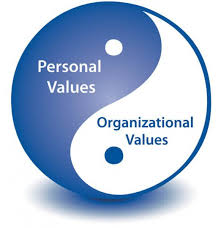It seems that one thing highly successful companies do that many average companies fail to do is prioritize values ahead of skills when hiring new employees.
This is something leaders of any type of team can, and should, practice.
Of course, in most cases, we want to ensure that someone has the basic skill set we need for the position. But that should be determined via skills tests, checking with references, and/or an interview that is completely separate from the interview screening for values.
We should have at least one interview that focuses on nothing other than determining if the potential teammate we are considering shares the values of our team.
There are several reasons why this is so important:
1. This is a great way to serve and care for our team members. Shared values is one of the strongest forms of social glue, resulting in much more cohesive teams that consist of members who work very well together and are much more engaged. Conversely, when we bring on a team member who does not share our values, team cohesiveness is likely to degrade rather quickly and engagement is likely to drop.
2. When we have engaged team members who consistently live the shared values of the team, we also find that we have happier, more loyal customers. Often, customers are as attracted to our values as they are to the product or service we offer.
If a customer interacts with a team member that doesn’t live the values the customer expects us to be living, she or he may become a little less loyal. If the violation is severe enough, she or he may leave us altogether.
Conversely, when customers experience the same values-based behaviors from team members each and every time they interact with our organization, our brand is strengthened in their minds. Loyalty and satisfaction are a very likely result.
3. By taking our time during the hiring process to ensure that a team member shares our values, we can save a lot of time and money in the long term.
It’s almost a certainty that if we bring on a team member who does not share our values, she or he will either quit or need to be let go within a short time. This is very costly in terms of both time wasted and money. Most HR professionals estimate that it costs around one year of salary to turnover a mid-level employee, and significantly more for senior leaders.
How to Hire For Values
If we want to ensure that a potential team member shares our values, there are several steps we can take:
1. We should ensure that our recruiting materials – including website, brochures, etc. – clearly articulate our values. This can help a candidate to determine on her own whether or not she should even take the time to apply and interview.
2. We should ask interview questions that require a candidate to explain a situations where he lived each one of our values. It’s not enough just to ask what his values are. He could be influenced by our recruiting materials and simply regurgitate them back to us. We can learn a lot by watching a candidate think through and reply to a question like, “Tell me about a time when you put the mission of the team ahead of your own personal ambition.”
3. You could take this process a step further by creating games or role-playing situations where candidates actually have to demonstrate values when put into situations that test their responses. This is exactly what a travel company called Grand Circle Corporation does. You can read about how they do it in this article in the Harvard Business Review.
Please leave me a comment below if you apply these ideas. I’d love to hear about your experience.
______
Did you like what you read? You can sign up here to get all my posts via our free eZine, which is full of great articles on personal and leadership development. You’ll also get a $15 eBook for free.
















